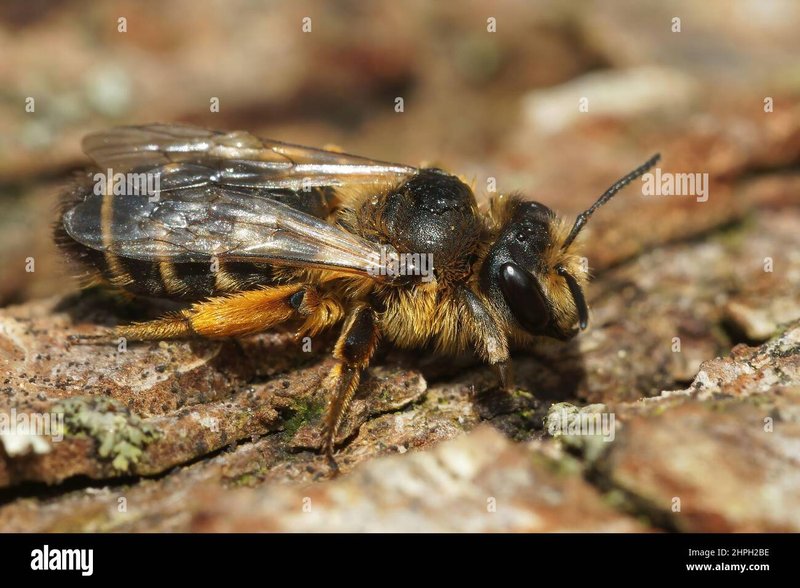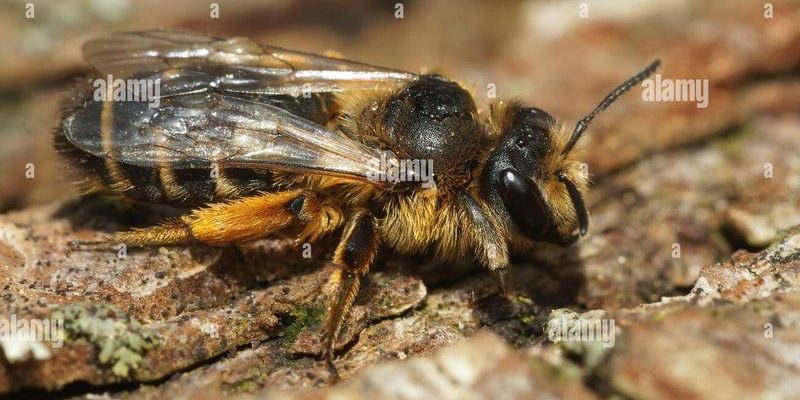
Mining bees are solitary, not overly aggressive, and play a crucial role in pollination. They’re essential to many plants’ reproduction—think of them as the unsung heroes of our ecosystems. If you find yourself curious about these fascinating insects and their unique habits, let’s dig deeper into some interesting facts about mining bees that might just surprise you!
What Are Mining Bees?
Mining bees belong to the family Andrenidae and are found in many parts of the world. Unlike honeybees, which live in colonies, mining bees are solitary insects. They spend most of their lives alone, creating individual nests in the ground. You might imagine them as tiny builders, each crafting their own little home with care. Their nesting habits are quite unique—the females dig horizontal tunnels in sandy or loose soil to lay their eggs, which are usually surrounded by pollen and nectar to feed the larvae when they hatch.
You might be wondering about their size. Mining bees can vary significantly, but most are small—often just a few millimeters long. They typically have a robust body covered with dense hairs that help them collect pollen efficiently. These adaptations make them well-suited for their role as pollinators. Just like a tiny construction worker with all the right tools, mining bees are perfectly engineered to thrive in their environment.
Life Cycle of a Mining Bee
So how do mining bees live and grow? The life cycle of a mining bee is an interesting process, and it starts with mating in early spring. After mating, the female begins her nest-building journey. She digs a tunnel into the ground and creates several cells, each designated for one egg. What’s remarkable is that she adds a stash of pollen and nectar to each cell before laying the egg. This way, when the larvae emerge, they have everything they need right there!
Once the eggs hatch, the mining bee larvae feast on the stored pollen and nectar as they grow. They will spend the winter in their underground home, developing into adulthood. When spring arrives, they emerge as adult bees, ready to continue the cycle. It’s like a little hidden world beneath our feet, where these bees are working hard to ensure their survival.
Why Are Mining Bees Important?
It’s easy to overlook the significance of mining bees, but they play a crucial role in our ecosystems. Their primary job as pollinators helps many plants reproduce. In fact, some plants rely exclusively on mining bees for pollination. Without these diligent workers, our gardens and crops could suffer, leading to less food and biodiversity.
Moreover, mining bees are often more effective pollinators than honeybees for certain plants. They have a unique way of buzzing that helps shake pollen loose from flowers, ensuring more effective pollination. So, when you see these bees buzzing around, remember—they aren’t just out for a leisurely flight. They’re actively contributing to the health of our environment!
Different Species of Mining Bees
There are over 1,500 species of mining bees, and they come in a variety of shapes, sizes, and colors. Some common species include the Andrena fulva and Andrena cineraria. The diversity among them is like an art gallery of nature—each species has its unique painting to contribute.
For instance, the Andrena cineraria, often referred to as the gray mining bee, has a striking appearance with a silky gray coat and is typically found in sandy soils. On the other hand, the Andrena fulva, known for its yellow-brown coloration, is often seen foraging on willows and other early-blooming plants.
Understanding these differences is essential, especially for gardeners and farmers. By knowing which mining bees visit their plants, they can encourage the right species to thrive and improve pollination outcomes in their gardens.
Challenges Facing Mining Bees
Like many species, mining bees are facing challenges in today’s world. Habitat loss, pesticide use, and climate change are among the top threats to their survival. Urbanization and agricultural expansion can lead to fewer nesting sites and less food availability.
Pesticides can harm not only mining bees but also other beneficial insects. Imagine trying to work in a toxic environment—it’s not easy! To support mining bee populations, homeowners and gardeners can create bee-friendly habitats with native flowering plants and avoid using harmful chemicals.
You might be wondering how you can help. Planting native flowers in your garden, leaving patches of bare ground for nesting, and reducing pesticide usage can go a long way. By taking these steps, you’re providing a haven for these important pollinators.
How to Attract Mining Bees to Your Garden
If you’re interested in welcoming mining bees into your outdoor space, it’s pretty simple! Start by planting a variety of native flowers that bloom at different times during the year. Think about daisies, clover, and even sunflowers. These plants not only look beautiful but also provide a buffet for these little pollinators.
Next, create some bare patches of soil in your garden. Remember, mining bees need a place to dig their nests, so don’t be too quick to cover every inch with mulch or grass. You might also want to let some dandelions and wildflowers grow. They’re often the first food source in spring, giving the bees something to eat when they come out of hibernation.
Lastly, avoid chemical sprays, and opt for organic pest control methods whenever possible. By making these simple changes, you can create a buzzing oasis that supports mining bees and other beneficial insects.
Mining bees are much more than just tiny, underground dwellers. They’re essential to our ecosystems, acting as important pollinators for many plants. By understanding their life cycle, their importance, and the challenges they face, we can better appreciate these remarkable insects.
Whether you’re a gardener looking to attract them or just someone interested in nature, learning about mining bees opens up a whole new world. As we work to protect their habitats and create welcoming spaces for them, we’re not just helping bees; we’re supporting the health of our environment. So next time you see a mining bee buzzing around, give a little nod to these hardworking creatures—they’re making the world a better place, one flower at a time!

